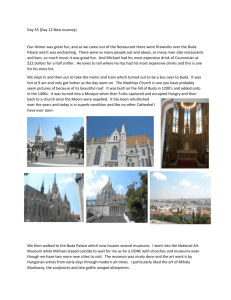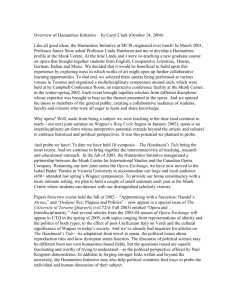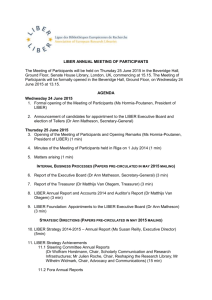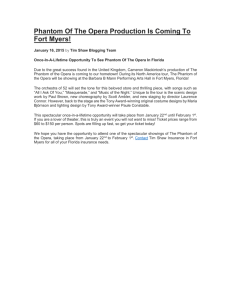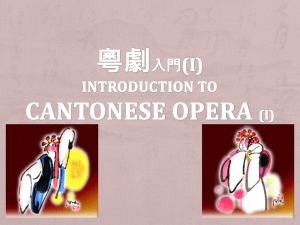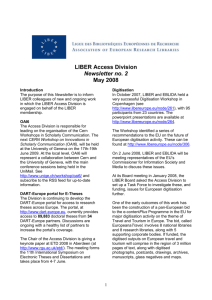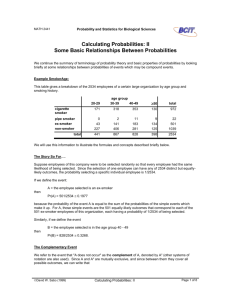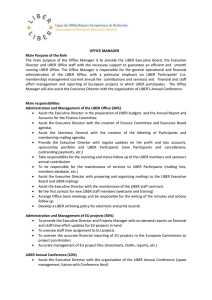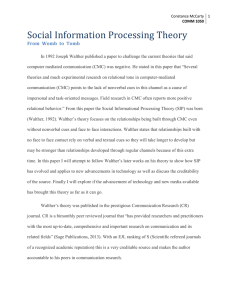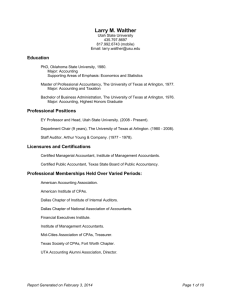MEDIEVAL AND RENAISSANCE MANUSCRIPTS
advertisement
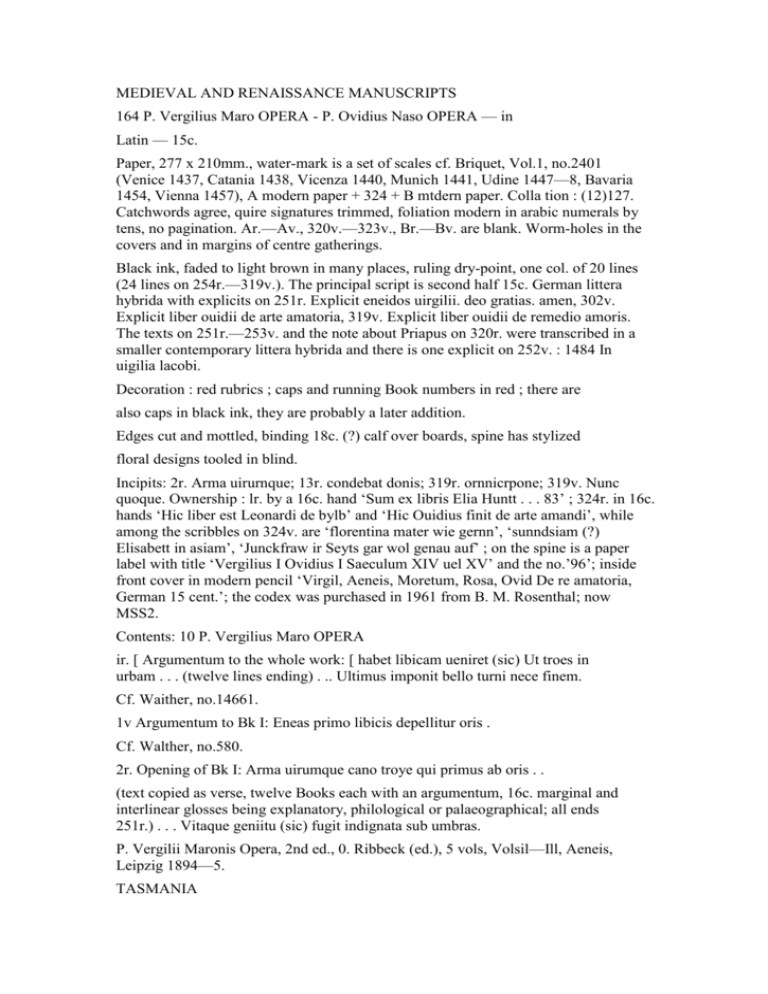
MEDIEVAL AND RENAISSANCE MANUSCRIPTS 164 P. Vergilius Maro OPERA - P. Ovidius Naso OPERA — in Latin — 15c. Paper, 277 x 210mm., water-mark is a set of scales cf. Briquet, Vol.1, no.2401 (Venice 1437, Catania 1438, Vicenza 1440, Munich 1441, Udine 1447—8, Bavaria 1454, Vienna 1457), A modern paper + 324 + B mtdern paper. Colla tion : (12)127. Catchwords agree, quire signatures trimmed, foliation modern in arabic numerals by tens, no pagination. Ar.—Av., 320v.—323v., Br.—Bv. are blank. Worm-holes in the covers and in margins of centre gatherings. Black ink, faded to light brown in many places, ruling dry-point, one col. of 20 lines (24 lines on 254r.—319v.). The principal script is second half 15c. German littera hybrida with explicits on 251r. Explicit eneidos uirgilii. deo gratias. amen, 302v. Explicit liber ouidii de arte amatoria, 319v. Explicit liber ouidii de remedio amoris. The texts on 251r.—253v. and the note about Priapus on 320r. were transcribed in a smaller contemporary littera hybrida and there is one explicit on 252v. : 1484 In uigilia lacobi. Decoration : red rubrics ; caps and running Book numbers in red ; there are also caps in black ink, they are probably a later addition. Edges cut and mottled, binding 18c. (?) calf over boards, spine has stylized floral designs tooled in blind. Incipits: 2r. Arma uirurnque; 13r. condebat donis; 319r. ornnicrpone; 319v. Nunc quoque. Ownership : lr. by a 16c. hand ‘Sum ex libris Elia Huntt . . . 83’ ; 324r. in 16c. hands ‘Hic liber est Leonardi de bylb’ and ‘Hic Ouidius finit de arte amandi’, while among the scribbles on 324v. are ‘florentina mater wie gernn’, ‘sunndsiam (?) Elisabett in asiam’, ‘Junckfraw ir Seyts gar wol genau auf’ ; on the spine is a paper label with title ‘Vergilius I Ovidius I Saeculum XIV uel XV’ and the no.’96’; inside front cover in modern pencil ‘Virgil, Aeneis, Moretum, Rosa, Ovid De re amatoria, German 15 cent.’; the codex was purchased in 1961 from B. M. Rosenthal; now MSS2. Contents: 10 P. Vergilius Maro OPERA ir. [ Argumentum to the whole work: [ habet libicam ueniret (sic) Ut troes in urbam . . . (twelve lines ending) . .. Ultimus imponit bello turni nece finem. Cf. Waither, no.14661. 1v Argumentum to Bk I: Eneas primo libicis depellitur oris . Cf. Walther, no.580. 2r. Opening of Bk I: Arma uirumque cano troye qui primus ab oris . . (text copied as verse, twelve Books each with an argumentum, 16c. marginal and interlinear glosses being explanatory, philological or palaeographical; all ends 251r.) . . . Vitaque geniitu (sic) fugit indignata sub umbras. P. Vergilii Maronis Opera, 2nd ed., 0. Ribbeck (ed.), 5 vols, Volsil—Ill, Aeneis, Leipzig 1894—5. TASMANIA 251r. Libellus uirgilii maronis intitulatur moretus. Tam nox hybernas bis quinque peregerat horas . . . (transcribed as prose, heavily glossed, all ending 252v.) . . . Atque agit in segettes et terre condit aratrum. Appendix Vergiliana, W. V. Clausen, et al. (eds), Oxford 1966. 253r. Publii Virgilii Maronis rosae. [ erat et blando mordentia frigora morsu . . . (copied as prose, glossed, ending 253v.) . . . Et memor esto euum sic properare tuum. Printed in the Giunta edition, Vergilius curn commentariis etfiguris, Venice 1522, quire eeej, fol.xxxiii verso to xxxiiii recto. Cf. Walther, no.20127. 320r. Liber uirgilii priapeiorum. (Not transcribed, but there is a brief marginal note on Priapus.) 2° P. Ovidius Naso OPERA 254r. [ Arnatoria.] Si quis in hoc artem populo non nouit amandi . . . (text in three Books, copied as verse, some lines left incomplete, glossed, all ending 302v.) . . . inscribant spoliis maso (sic) magister erat. P. Ovidi Nasonis Amores, Medicamina Faciei Fernineae, Ars Amatoria, Rernedia Amoris, E. J. Kenney (ed.), Oxford 1961, pp.109—200. This MS. is not mentioned. 303r. [ Arnoris.] [ huius amor titulum nomenque libelli . . ( text transcribed as verse, glossed, single word gaps completed by a later hand, all ending 319v.) . . . Carmine sanati femina uirque meo. ibid., Kennedy (ed.), pp.2Ol—37 without reference to this MS. See also Walther, no.10239. Bibliography : B. M. Rosenthal, Catalogue XII. Medieval Manuscripts. Incunabula, New York 1961, p.9, item 43 ; D. H. Borchardt, ‘Important manuscripts in the University Library’, University of Tasmania Gazette, Vol.XI (1961), p. K. V. Sinclair, ‘Some late manuscripts of the works of Classical authors’, Phoenix, Vol.XVI (1962), p. 165 Guido Ebroicensis op SERMONES DE TEMPORE (fragments) — in Latin — 13c. or 14c. Vellum, 215 x 155mm., four bi-folios presenting 16 sides. The sheets have been torn at the corners, many margins and areas of text are stained brown where they were in contact with wooden covers. There is no pagination. On the verso side, upper margin, of one folio is ‘lxxxvi’, while ‘lxxviii, lxxix, lxxxv, lxxxvii, lxxxxiiii, lxxxxv, lxxxxvi’ remain stuck to the inside covers of the volumes from which they were removed (see below). Black ink, fading to brown in places, ruling brown ink, 2 cols each of 40 lines. The script is late 13c. or early 14c. French littera gothica textualis.


